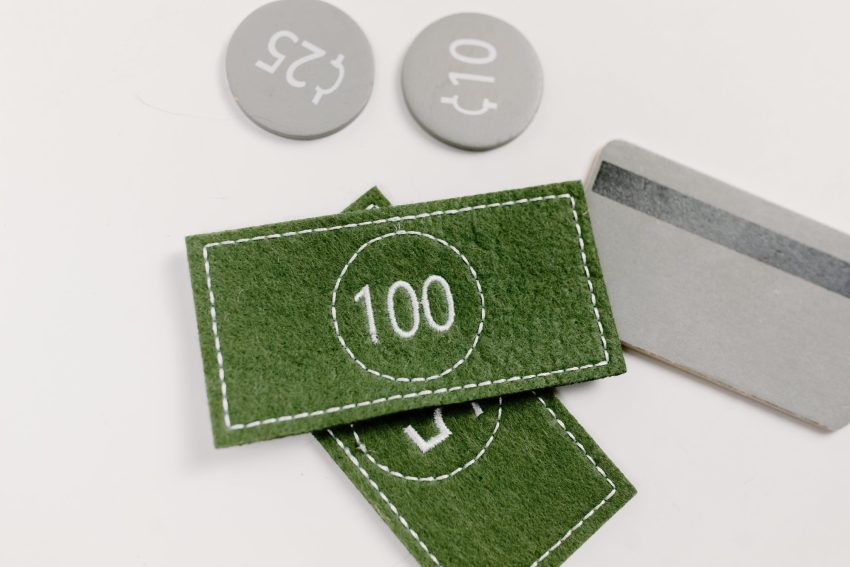Whether you’re promoting a brand, celebrating a special occasion, or simply looking for a new hobby, embroidery can be an excellent choice. But it also isn’t something you should merely dive into without a bit of foreknowledge. That’s where we come in.
Here are ten of our most valuable tips for creating better custom embroidery designs.
Know Your Fabrics
Just as with apparel, fabric type is the first and most important consideration when designing personalized embroidery. Not all fabrics are suitable as a basis for embroidered designs, and using the wrong fabric can potentially ruin a shirt. As for how to select a fabric to embroider, Graphics Pro notes that there are three factors you should consider:
- Texture. The best fabrics have a smooth texture, a high thread count, and an even surface. Coarser and denser material may cause the design to look rough or uneven.
- Stability. The best fabric for embroidery has a bit of give, but doesn’t stretch. Overly-stretchy materials such as light polyester can not only cause fraying but also ruin a design’s proportions.
- Durability. As you might expect, overly-fragile materials cannot easily be embroidered, as they tend to tear when subjected to the needle.
Sew Guide recommends using any of the following materials as an embroidery base:
- Canvas
- Aida-weave cotton/java cloth
- Cotton-polyester blends
- Fiddler’s cloth
- Jobelan
- Hardanger fabric
- Klostern
- Cotton muslin
- Linen
- Silk
- Satin
As for embroidery thread — also known as floss — Create For Less recommends the following:
- Cotton
- Variegated
- Reflective polyester
- Silk
- Pearl cotton
- Rayon
Keep Things Simple
Though it’s certainly possible to create some downright stunning designs through embroidery, it’s not generally well-suited for intricacy. In most cases, the lines created by embroidery floss tend to be comparatively large and thick compared with other printing/design methods. As such, it’s usually better to stick to less complicated artwork in your embroidery, especially if you’re just starting out.
Pay Attention to Size
One of the biggest mistakes we see first-timers make with embroidery involves sizing. Generally, it’s better to keep your embroidered designs understated and unassuming. Too much embroidery tends to make a shirt rigid and uncomfortable to wear while also looking incredibly tacky.
Mind the Gaps
We’ve mentioned the importance of visual composition before, but it bears mentioning again. You need to think about how your embroidered design is going to be oriented on a shirt. To that end, we strongly recommend doing a bit of reading on spacing.
Ensure You Have the Proper Equipment
If you’re a hobbyist, you probably want to do the embroidery yourself rather than bringing in a third party. And that’s perfectly okay. Just make sure you have the right equipment before you get started.
Aside from a shirt and embroidery thread, this includes:
- A sewing machine that can support free-motion stitching. Most do, but it never hurts to double-check. Note that you can also embroider by hand.
- An embroidery hoop and stabilizer. The former ensures that the shirt you’re embroidering remains taut. The latter helps prevent your sewing machine from jamming.
- Embroidery scissors. For cutting the embroidery thread once you’re done. Also crucial for making embroidery patches.
- A quilting foot. Helps you more evenly control the direction of your stitch while also keeping your fingers away from the needle.
- An embroidery needle. These are not the same as typical sewing needles.
Plan Your Design First
Last but certainly not least, you’ll want to plan your design before you begin, as this is what you’ll use to create your stitch guide.
When it comes to brainstorming this design, consider the following:
- Use easily differentiated, complementary colors and shades. Embroidery is not well-suited for color blending.
- Consider if you want to embroider directly on the fabric or use a patch — the former may be better for more complex designs.
- If you’re including text, use a simple font with relatively thick lettering.
- Decide if you want to commission an artist, purchase a premade design, or create something of your own.
Ensure Your Embroidery is Done Right with BlueCotton
If you’re using your embroidery design for custom branding (or you simply don’t trust yourself around a sewing machine), BlueCotton can help. Our award-winning Design Studio makes it easy to create stunning embroidery. And once you’ve finalized that design, shipping is quick, easy, and painless.
Because you deserve nothing less.
